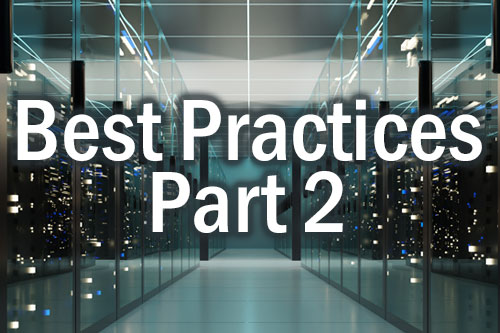Cloud service providers, here are 5 more best practices—courtesy of Supermicro—that you can follow for designing and deploying rack-scale data centers. All are based on Supermicro’s real-world experience with customers around the world.
Best Practice No. 6: Design at the data-center level
Consider your entire data center as a single unit, complete with its range of both strengths and weaknesses. This will help you tackle such macro-level issues as the separation of hot and cold aisles, forced air cooling, and the size of chillers and fans.
If you’re planning an entirely new data center, remember to include a discussion of cooling tech. Why? Because the physical infrastructure needed for an air-cooled center is quite different than that needed for liquid cooling.
Best Practice No. 7: Understand & consider liquid cooling
We’re approaching the limits of air cooling. A new approach, one based on liquid cooling, promises to keep processors and accelerators running within their design limits.
Liquid cooling can also reduce a data center’s Power Usage Effectiveness (PUE) ratio, a measure of how much energy is used by a center’s computing equipment. This cooling tech can also minimize the need for HVAC cooling power.
Best Practice No. 8: Measure what matters
You can’t improve what you don’t measure. So make sure you are measuring such important factors as your data center’s CPU, storage and network utilization.
Good tools are available that can take these measurements at the cluster level. These tools can also identify both bottlenecks and levels of component over- or under-use.
Best Practice No. 9: Manage jobs better
A CSP’s data center is typically used simultaneously by many customers. That pretty much means using a job-management scheduler tool.
One tricky issue is over-demand. That is, what do you do if you lack enough resources to satisfy all requests for compute, storage or networking? A job scheduler can help here, too.
Best Practice No. 10: Simplify your supply chain
Sure, competition across the industry is a good thing, driving higher innovation and lower prices. But within a single data center, standardizing on just a single supplier could be the winning ticket.
This approach simplifies ordering, installation and support. And if something should go wrong, then you’ll have only the proverbial “one throat to choke.”
Can you still use third-party hardware as appropriate? Sure. And with a single main supplier, that integration should be simpler, too.
Do more:
- Check out best practices 1 - 5 in Part 1 of this blog series.
- Get 2 bonus recommendations from the full Supermicro white paper: 10 Best Practices for CSPs to Scale the Data Center



